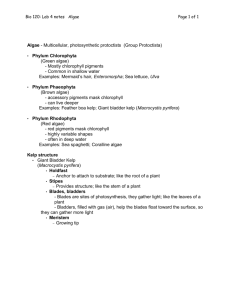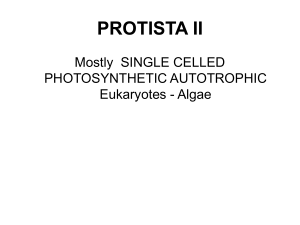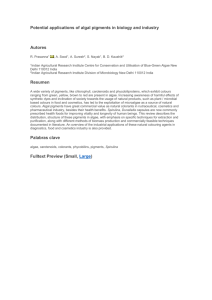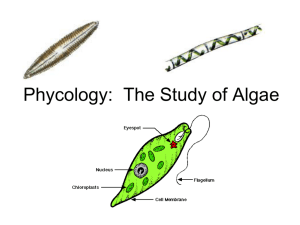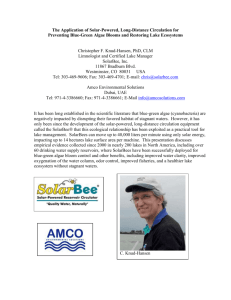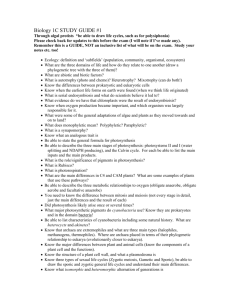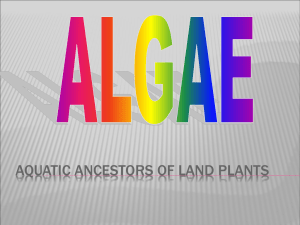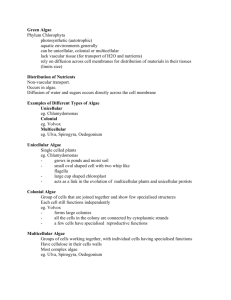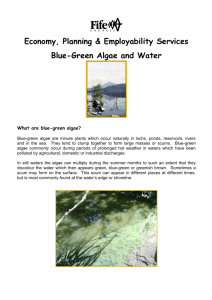Phycology: The Study of Algae
advertisement
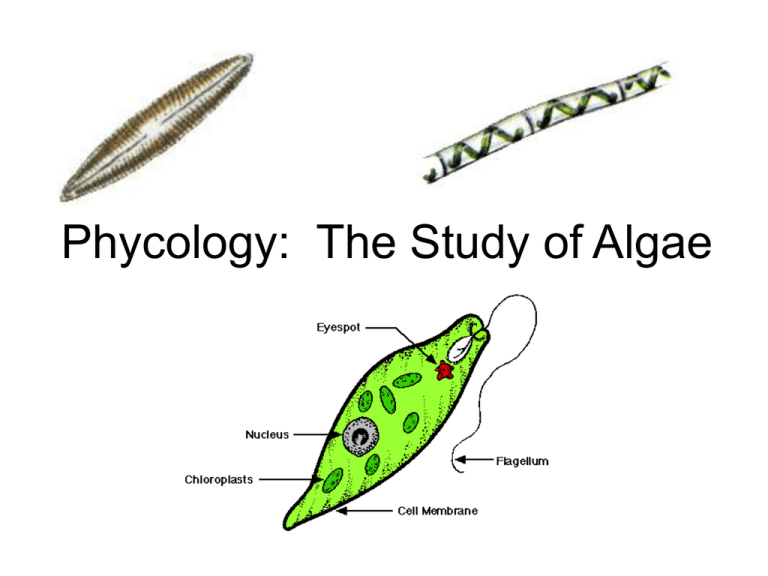
Phycology: The Study of Algae • Some restricted to marine environment (reds and browns), some to freshwater (our focus) • Characterized by morphology, biochemistry, pigments, reproductive methods, food reserves Photosynthetic Pigments • Chlorophylls – Chlorophyll a-found in all algae and macrophytes; the primary pigment • Absorbance spectrum 660-665 nm and 430 nm – Chlorophyll b-only in chlorophyta, euglenophyta and charophyta; • Absorbs about 435 nm and 645 nm – Chlorophyll c- accessory pigment • Absorbs 630-635, 583-586, and 444-452 nm. Accessory Pigments • Carotenes- and are most common • Xanthophylls-derivatives of carotenes – E.g., lutein, diatoxanthin, myxoxanthin, peridinin • Biliproteins-almost exclusively in cyanophyta – E.g., phycocyanin, phycoerethryin Cyanophyta (Blue-green algae) • are prokaryotic bacteria; date to 3.5 BYA • ~55% are blue-green • ~15% are never blue-green; others may be green, olive, red, purple, black, or colorless • Store food as glycogen (iodine negative) • Never flagellate, but some can move (oscillate or glide) • Reproduction – Sexual-not known – Vegetative-binary fission; fragmentation – Asexual • Akinete-germinates directly • Heterocyst-may divide either directly to a trichome or to endospores which ‘germinate’ to a trichome • Presence of pseudovacuoles; gas-filled; affect buoyancy; may shade other species Cyanophytes (continued) • Nutrition: – Mostly autotrophic, some saprophytic – 40 different kinds are N-fixers; all of these have heterocysts; do well in N-poor environments • Aphanizomenon Anabaena Nostoc • Distribution-highly successful; terrestrial, aquatic, marine, epiphytic, on walls, soils, parasitic, planktonic; some can live at 80oC. • Economic importance – – – – Rice paddy nitrogen fixation Nostoc balls Odors and flavors-musty, moldy Allergies • Coloration of flamingoes and shrimp Merismopedia Nostoc balls Oscillatoria Spirulina Microcystis Rivularia Lyngbia Scytonema false branching

